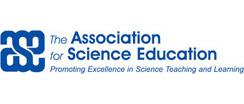Water purity
This topic is common to all specifications, it is expected that students know about the water cycle, the difference between hard and soft water, the effects of hard water and how to remove ions that cause hardness. This includes the relative solubility of different salts in water
There are good opportunities in this topic for students to carry out research and practical investigations.
Whilst this list provides a source of information and ideas for experimental work, it is important to note that recommendations can date very quickly. Do NOT follow suggestions which conflict with current advice from CLEAPSS, SSERC or recent safety guides. eLibrary users are responsible for ensuring that any activity, including practical work, which they carry out is consistent with current regulations related to Health and Safety and that they carry an appropriate risk assessment. Further information is provided in our Health and Safety guidance
World Water
This is a series of eight resources which can be used to teach about world water supplies (some of these have cross-curricular links to biology topics, including micro-organisms and spread of disease).
You could introduce the lack of available 'clean' drinking water in certain parts of the world by using the video 'Safe Drinking Water' as a starter. This could then be followed by showing a sample of water in a bottle and asking the students if it is 'clean'. The definition of 'clean' could be discussed with students and what they mean by 'pure'. The point to make is that water does not have to be pure to be fit to drink but it has to be free from micro-organisms which would cause disease. Much of the water we drink is not pure because it contains dissolved salts.
The pack includes resources about how water is contaminated and how it is treated to make it safe for human consumprion e.g. filtration. This can support students independent research into water treatment methods - a visit to a local water treatment plant or sewage works would be ideal!.
An good practical activity would be getting the students to pass various solutions like orange juice, coke through separating columns filled with soil, limestine and activated charcoal to find out how this affects the appearance and properties like pH. The use of activated charcoal in gas masks is an additional discussion point.
Water and waste engineers are responsible for using technologies in water treatment and 'Engineers can save lives' highlights a potential career path which makes use of this branch of chemistry.
Drinking Water *suitable for home teaching*
This resource can be used by your students as part of a research project exploring the safety of drinking water in different parts of the world.
As a starter activity you can use a 'Reading Images' activity: show students various photographs or images of people in various countries and the water/sanitation conditions. Ask them to say what the pictures tell them, what they might infer from them and what questions they might want to ask the people in the pictures. This should prompt a discussion about whether people in different countries have access to safe drinking water.
An alternative way to approach this topic is to consider atronauts in space. The space shuttle can only take a limited supply of fresh water into space. What heppens when this runs out? This will take a while for the idea to register with the students as they realise what the astronauts will eventually be re-cycling!
Encourage the students to appreciate that the Earth is a closed system just like to space shuttle and that water needs to be re-cycled for use as drinking water. This should help them see the importance of water treatment technologies and provide relevance for their research.
Water Supply and Developing Countries
Students may be surprised at how much water is used in manufacture of many materials. You could use available websites so that students can explore not only their own water footprint but the global footprint:
They could consider how much water they use for every day activities - shower/bath, washing, cooking cleaning their teeth and so on. They could consider how people manage when water is scarce and what they can do to reduce their water footprint.
This resource pack is very comprehensive and can be used to highlight issues such as global water scarcity, the challenges people face when sourcing water and maintaining a water supply in developing countries and the role of the engineers in solving these problems.
This could lead to an ethical debate about the amount of money spent on bottled water in affluent societies where tap water is freely avaiable and safe to drink.
Removing water hardness
This activity can be used to show students who are not from a hard water area the problems that can be caused when water is heated. Hard water can cause problems to machinery and this can be shown by the limesacle build up seen in kettles - this is limescale is made up of calcium carbonate. This can have a huge effect in the home in washing machines and in industrial processes which results in cost implications. You could discuss with students the relative benefits and drawbacks of the methods used to remove the hardness from water.
Temporary hardness caused by the presence of calcium hydrogen carbonate may be removed by boiling to produce calcium carbonate (a precipitate), carbon dioxide and water.
Permanent hardness cannot be removed by heating and is caused by dissolved salts such as calcium and magnesium sulphates.
Water Treatment
If you are not able to take students on a field trip to a local water treatment plant then you could use this resources as a case study to highlight how water treatment is carried out in a specific context. Students explore the processes involved in making industrially contaminated water fit to drink.
The case study can provide background information for students to to use in a discussion/debate activity. Students can evaluate the implications and ethics of using a valuable and limited commodity, like water, in industrial processes when there are so many places in the world where water is scarce.



